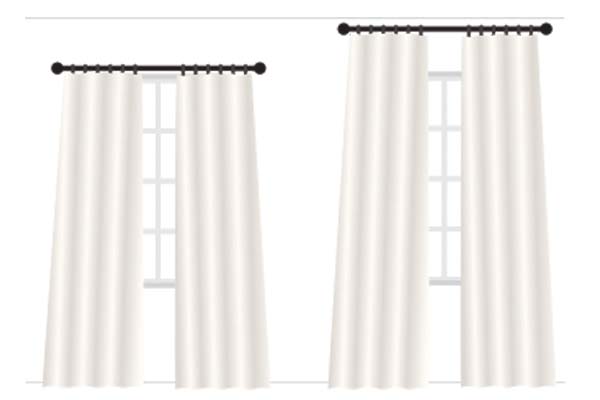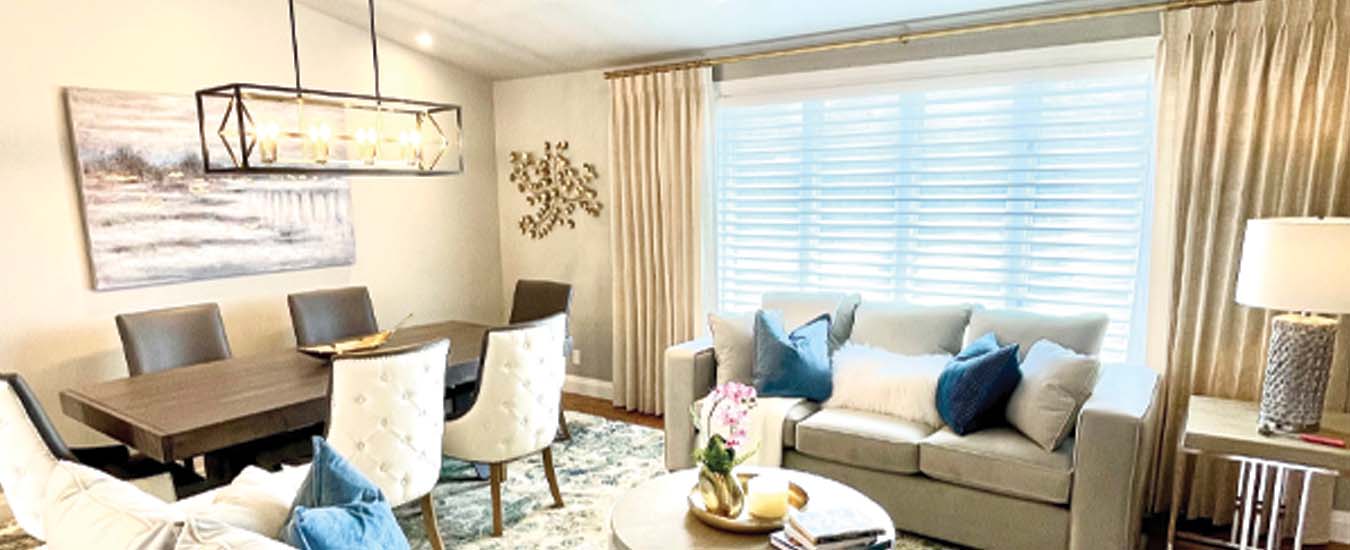Great drapery makes great rooms
The word “drapery” is usually met with adversity when it’s presented to clients. I often hear the phrases, “I don’t want heavy drapes” or “drapes remind me of my grandma” or “will they cover the mouldings? Because I like to see
the mouldings”….
The truth is that in order to finish off a room, we need the vertical height and softness of the fabric that drapery can offer.
Drapery not only adds that softness element to the space, but it also offers sound dampening quality—getting rid of that dreadful echo—as well as elements of colour, pattern and texture which are all needed to make a room fabulous. Drapery can even make the ceilings appear taller, as well as make smaller windows appear larger. Drapery is the one element in the space that has the ability to pull the room together and finish it off.
Often expensive but well worth the investment, custom drapery combined with blinds gives the ultimate layering experience in the home.
We get the beauty and warmth of the vertical fabric on the walls, combined with the privacy element of the blinds on a horizontal plane. I like to use white blinds to offer the most light to the space and then use a nice colourful lined fabric on the panels. This combination nicely dresses the windows and lends to a feeling of warmth and completion.
Prefab drapery is a great cost-effective option. These store-bought panels and can look custom using a few designer tricks. Weighted and lined drapery is the key to a satisfactory prefab purchase, so that they fall nicely. You also want to purchase the longer variety (usually 108”) and get them hemmed about two inches off the floor so vacuuming is made simple. Having your prefab drapery lined means that the sun won’t bleach the fabric and they will appear more custom, as they block out a good portion of light and visually appear thicker, which a feature of the custom variety.

Opposite page: The room is highlighted with custom traditional pinch pleat panels, making the room appear larger and ceilings higher. Above: This sketch is often presented to design and decor clients when representing the importance of floor-to-ceiling drapery. It gives them a great visual explanation and demonstrates why I recommend floor to ceiling panels.
Drapery styles 101
There are many styles of drapery, which tends to be an overwhelming decision for some clients. I like to boil down the info and present them to the client so they can make an informed decision based on their wants and needs.
Traditional: Pinch pleat is timeless and elegant. It creates beautifully visible pleating at the top of the drapery rod, and we typically use rings with this style to add an element of flair. Usually reserved for the more ornate or pulled-together space, this style is the ultimate in traditional elegance.
Avant-Garde: Goblet pleat style is exactly what its name suggests, as it appears to be a goblet sitting at the top of the pleat. This style can be mixed with modern furnishings and rugs to create a subtle elegance; a Parisian feel, if you will. Do these drapes in a velour or velvet fabric and pool them on the floor for maximum trendiness.
Transitional: Also known as grommet style. I personally love grommets because they are a cost effective way to gain lots of fullness and can be easily opened and closed as they slide on the rods. They also create nice clean pleats and fall elegantly without much effort. In the grand scheme of things, grommets are the least high maintenance of the drapery family and they can go with any style of interior. They’re cost effective and they look great!
Rod pocket: Depending on the fabric used, this style is also timeless and fun. These drapes sit on the rods and bunch up, creating a more casual pleat. Use these in a more relaxed space.
Sticking to these simple tips and tricks can really help to finish off a space.
Most clients opt for grommet style as they are the most versatile of the styles and offer the best cost-effective option of the bunch; however in 2020 I did do quite a few of the custom pinch pleat variety, which are equally lovely.
No matter what style you choose, or how much you decide to spend, coordinating the colour and fabrics is also important.
I generally like to do a gold, bronze panel or grey colour in my designs, as the gold tends to lift the room and give it some life when paired with neutral furnishings and paint colours.
Greys are a nice neutral when paired with stronger wall colours like deeper blues or greens. Greys can even be paired with whites when a calmer
pallet is desired.
Without drapery, a space often feels flat and empty. Drapery adds the final touch that no other element adds, so it’s key to finishing off a room. It often ties in rugs, through cushions, and even art. Drapery also offers a soft element in a space with hard finishes like bathrooms and kitchens.
